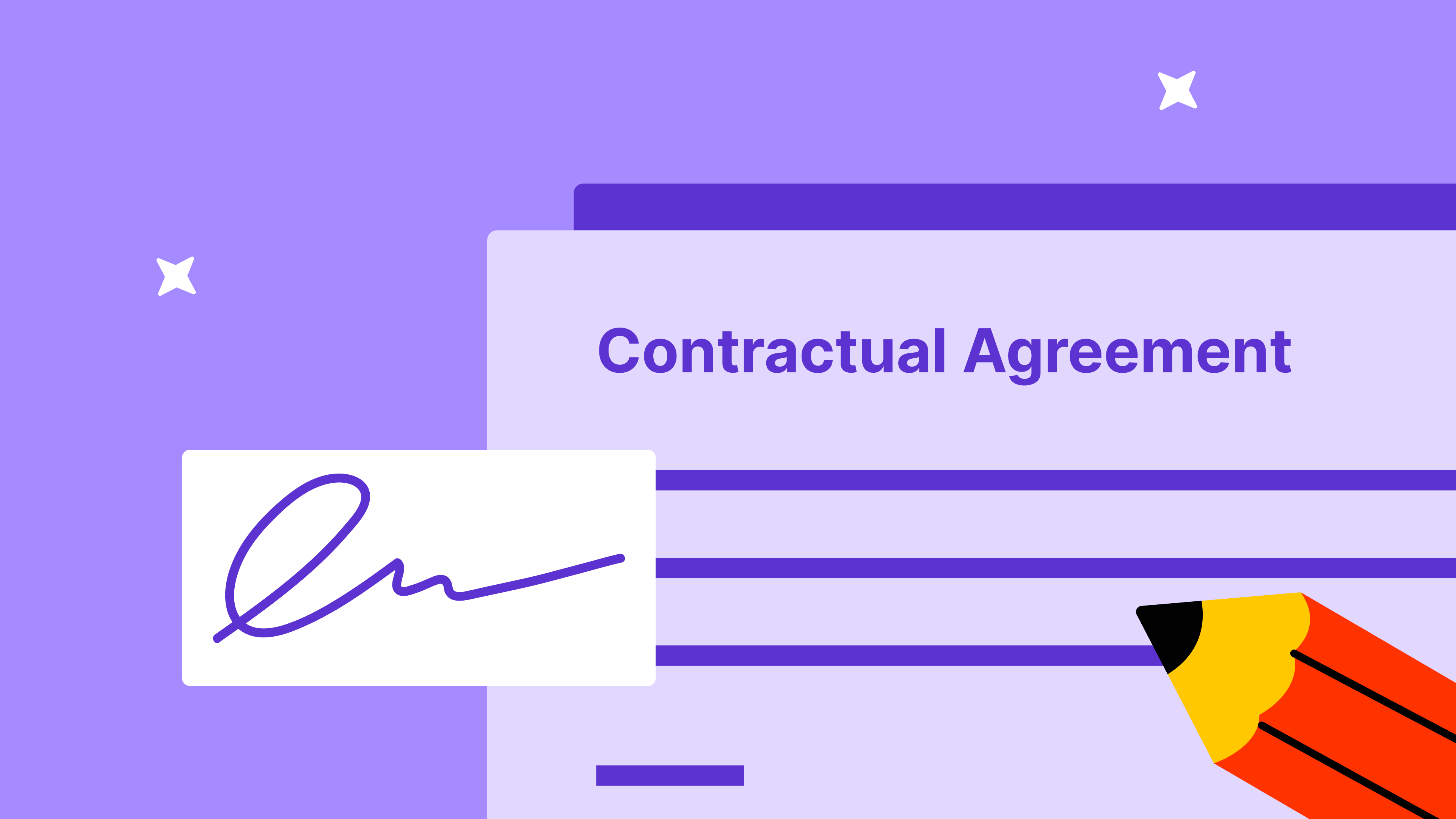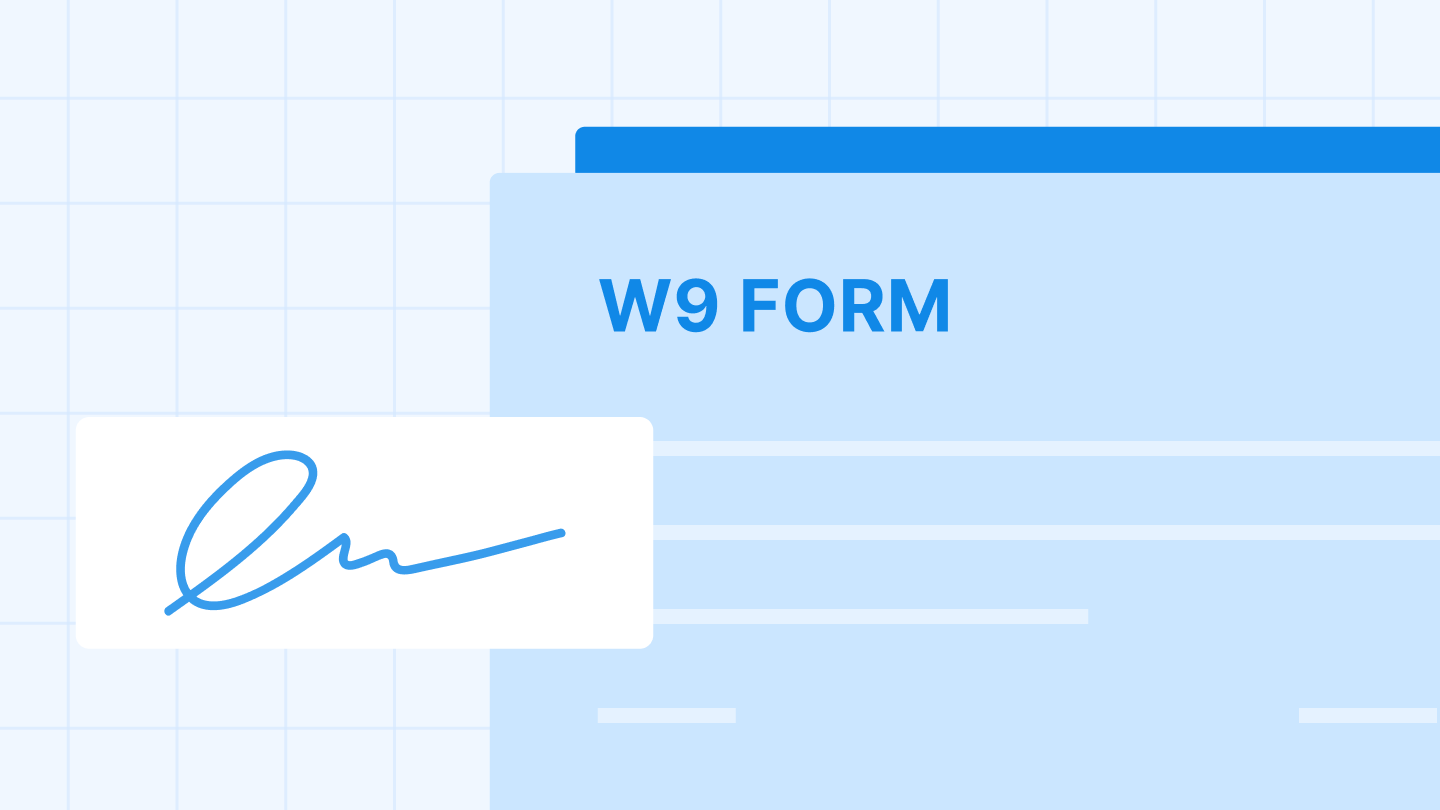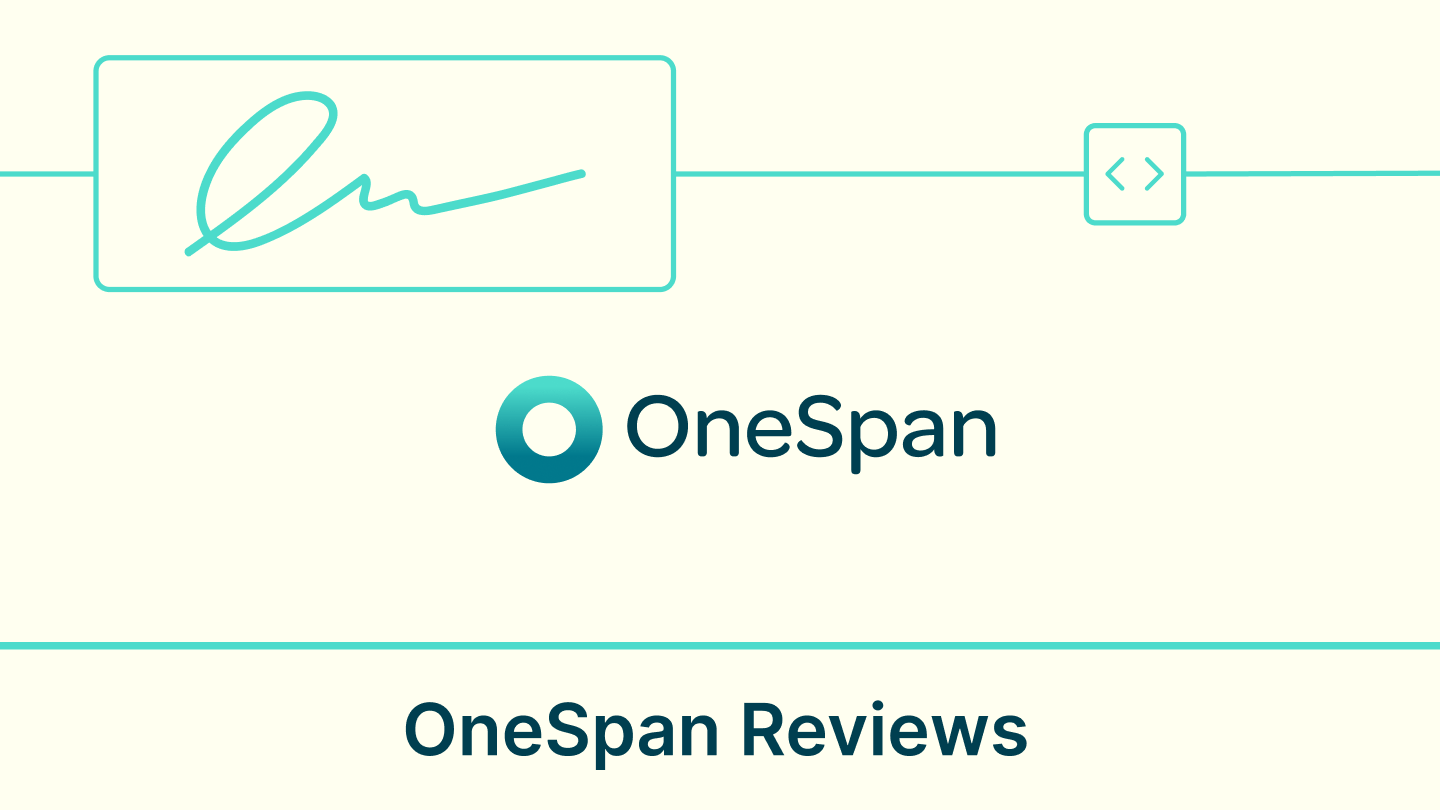A contractual agreement is a legally binding understanding between two or more parties. It outlines the rights, responsibilities, and obligations that each party agrees to fulfill.
Unlike a casual agreement or handshake deal, a contractual agreement carries legal weight.
Think of a contractual agreement as a promise, backed by law, where each party agrees to do an act, or refrain from it, in exchange for something. It could be providing a service, delivering goods, or paying for a product. If either party fails to hold up their end of the deal, the other side can seek legal help to enforce the terms or recover damages.
For example, when you sign an employment contract, you agree to work for a salary and protect the employer's confidential information. In return, the employer agrees to pay you and provide a safe work environment.
Think of it as the rulebook both parties agree to play by. Some other examples of contractual agreements are:
- A freelance graphic designer signs a contract with a small business to design a new logo by a specific deadline in exchange for payment.
- Landlords and tenants have a rental agreement that specifies monthly rent, lease duration, and maintenance responsibilities.
- A software vendor agrees to provide licensing and ongoing support to a company under a service-level agreement.
Contract vs. Agreement: What is the difference?
“Contract” and “agreement” are words used interchangeably, and it’s easy to confuse them. An agreement is a mutual understanding, but becomes a contract when legally binding elements are included. All contracts start as agreements, but not all agreements turn into contracts.
For example, you can agree to meet a friend for coffee, but that does not mean you have a legally binding contract. However, if you decide to arrange coffee for your friend's event and both sign a document outlining the details, then it becomes a contract.
Essential elements of a valid contractual agreement
The Association of Corporate Counsel (ACC) states that breach of contract accounts for 58% of business litigation. A transparent and fair contractual agreement helps avoid potential issues and is legally enforceable.
Not every agreement you shake hands on can hold up in court. It must have the following elements to become a valid contractual agreement:
1. Offer
An offer is a clear and definite proposal made by one party to another. It sets out what is being proposed, under what terms, and with what expectations.
For example, a contractor offering to remodel a kitchen for $15,000 within 60 days is making a specific offer.
2. Acceptance
Acceptance must match the offer exactly, without changes. It should be clear and directly communicated to the offeror. A vague or conditional response isn’t true acceptance and may be seen as a counteroffer.
For unambiguous acceptance in the above example, the homeowner agrees to the contractor’s terms as-is, signs the written proposal, and returns the signed copy.
3. Consideration
Every valid contract requires consideration, meaning both parties must exchange something of value, like money, services, goods, or even a promise (such as not competing with a business). Without consideration, the contract has no legal basis.
In our example, each party has to give something of value. The homeowner agrees to pay $15,000, and the contractor will provide labor, materials, and expertise to remodel the kitchen.
4. Capacity
All parties must have the capacity to enter a contract. They must be at least 18, mentally competent to sign the contract, and not under the influence of substances that impair judgment.
So, the contractor in the example must be a licensed business owner over 18, and the homeowner must be of legal age and of sound mind. It ensures they are capable of understanding and agreeing to the terms.
5. Legality of purpose
A contract must have a lawful purpose. Agreements to do something illegal, like selling banned substances, are not recognized in court.
In our example, remodeling a kitchen is legal, but a contract to do unlicensed expansion work that violates building codes would not be enforceable.
6. Mutual consent
Mutual consent, also known as a “meeting of the minds,” means everyone involved willingly agrees to the terms. The agreement must be free from coercion, fraud, or misunderstandings.
The homeowner in the example must freely agree to the contract terms after reviewing the quote and asking questions.
7. Certainty of terms
A contract must have clear terms a court can enforce, including the scope of work, payment, deadlines, and termination details.
The agreement of our example must have details like the materials to be used, the timeline, the total cost, the payment schedule, and the consequences of delays or changes.
Common types of contractual agreements
As business practices evolve, contracts have changed from verbal to digital forms. Here are some common types of contracts:
1. Express vs. implied contracts
Express contracts are clearly stated in writing or verbally. These outline services and payment terms. Conversely, implied contracts are formed through actions or behavior, like paying a barber after a haircut, even if nothing is written down.
2. Unilateral vs. bilateral contracts
A unilateral contract is where one party makes a promise that the other can accept through action, like a reward poster that promises cash if you find a lost dog. On the other hand, a bilateral contract means both parties promise something and are bound by it, like a job offer and acceptance.
3. Void, voidable, and unenforceable contracts
A void contract has no legal effect from the start, like a contract that involves illegal activity. A voidable contract is valid, but one party can cancel it, such as in deceptive negotiations. An unenforceable contract is valid but can’t be enforced due to legal technicalities, like missing signatures.
4. Modern digital forms
Contracts have gone digital as business move their operations online. The commonly used online contract signing methods are:
5. Click-wrap and browse-wrap agreements
You click a button or mark a check box to agree to the terms on a website or a digital form. It indicates their acceptance of the terms. Browse-wrap agreements show the terms on a webpage and assume acceptance if you continue to use the site.
6. eSignatures
Digital contracts and online transactions can be authorized by eSignatures. Electronic signatures are legally valid under UETA (Uniform Electronic Transactions Act) and eIDAS (Electronic Identification, Authentication, and Trust Services) as they are secure and verifiable.
7. Smart contracts
Smart contracts are self-executing digital contracts stored on a blockchain. They automatically trigger actions when the mentioned conditions are met. For example, a smart contract can release payment once a shipment is delivered.
Why are contractual agreements important?
Contracts aren’t just paperwork. These lay the foundation of business and personal relationships. Contracts set clear expectations and responsibilities, protecting against legal disputes, financial loss, and damaged relationships. They help with the following:
- Clarity and expectations: A well-written contract prevents misunderstandings by defining the rights and responsibilities of each party.
- Protection of rights: A contract provides legal protection, allowing action if one party fails to meet obligations and ensuring commitments are taken seriously.
- Evidence in disputes: Contracts provide proof of agreements and help resolve disputes by showing what was originally decided. Lawyers, mediators, and courts rely on contractual agreements to make rightful decisions.
- Risk management: Contracts mention contingencies, termination clauses, and dispute resolution methods to manage risks and protect against legal and financial issues.
- Facilitation of business: Contracts help strengthen vendor and client relationships by building trust. They support long-term collaboration and help with business growth.
- Legal compliance: Contractual agreements comply with local, state, and federal laws, covering labor, taxes, and industry regulations to support legal and ethical operations.
Real-world examples of contractual agreements
Whether you’re hiring someone, making a sale, or starting a business, contractual agreements are a part of everyday life. Here are some examples of contractual agreements:
- Employment contracts: An employment contract outlines the terms of a working relationship between an employer and employee. It includes the job role, compensation, benefits, working hours, confidentiality clauses, and termination terms.
- Sales contracts: Sales contracts govern the buying or selling of goods or services. They define the price, quantity, delivery timelines, and payment terms.
- Lease agreements: A lease contract is used when one party rents property or equipment from another. It includes rent, duration, maintenance responsibilities, and termination conditions.
- Service contracts: Service contracts cover work provided by professionals like consultants, contractors, or freelancers.
- Non-disclosure agreements (NDAs): NDAs are contractual agreements that protect confidential information shared between parties.
- Partnership agreements: Partnership agreements define the structure and responsibilities of business partners, including roles, capital contributions, and profit-sharing.
Digitally managing your contractual agreements
Managing contracts with paper, emails, and spreadsheets is difficult for fast-growing companies. You need smarter, faster, and more secure ways to handle documents.
A digital contract management solution helps you create, store, track, and manage contracts electronically from a single platform. It reduces manual work, minimizes errors, and keeps your entire contract lifecycle streamlined and compliant.
Signeasy is an end-to-end contract management solution that makes your contract workflows effortless and efficient. Here is how it helps you from drafting to eSigning your contracts:
- Centralized and secure repository: Store your contracts in a secure cloud location with strong encryption and access controls. The easy search and categorization features save time spent on digging through folders or inboxes.
- Reusable templates: Prepare and send standardized contracts in minutes. You can use oure unlimited templates for frequent agreements like NDAs, service contracts, or onboarding documents.
- Automated workflows: Set up approval sequences to auto-route documents for signing and automate reminders to keep contracts moving without bottlenecks.
- Real-time alerts: Stay updated on contract activity with real-time notifications for views, signatures, and edits.
- Analytics and reporting: Track contract performance, bottlenecks, and renewal timelines with easy-to-use dashboards. A detailed trail for every contract helps with easy retrieval of past activity during audits.
- Regulatory compliance: Signeasy is compliant with eSignature laws like UETA and eIDAS, ensuring your contracts are legally binding.
- Powerful integrations: Signeasy seamlessly connects with popular business tools and CRMs like Google Workspace, Microsoft 365, HubSpot, and Formstack.
Signeasy is not just your ordinary eSigning solution. Signeasy uses AI-powered contract intelligence to simplify contract management by automatically extracting key terms and providing summaries. It helps make better decisions and reduces legal exposure.
Our mobile app makes it easy to sign and manage contracts on the go, making Signeasy suitable for any work environment. It is proven to boost efficiency by 60% by reducing contract turnaround time by 80%. So, if you’re ready to simplify your contract workflow without losing control or visibility, Signeasy’s got you covered.
Want to see it live? Book a demo and see how Signeasy can make contract management a whole lot easier.











